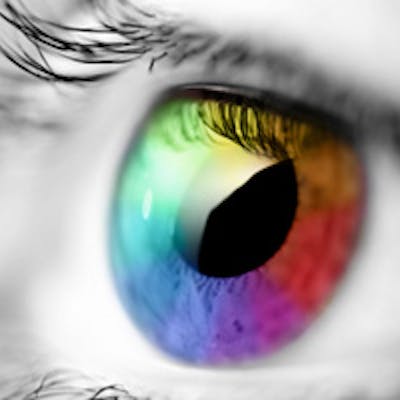A Mother's Mission to Identify Her Child's Color Blindness
Let's have a look on a journey of a mother, how she found that her child is color blind and general question that every parents ask.
[Author : Admin | Date : 7, April 2023 | Reading time : 6 min]
Color blindness is a condition where peoples are unable to detect certain colors like normal peoples do. There is various color-blindness test available to check which kind of color-blind you are.
In this article, we will take a look at a mother's journey that how she found that her child is color-blind and her concern towards her color-blind child.
When my son began having issues in school, I by no means gave color blindness a thought. He had an issue identifying dark blue from purple, however, that appeared like a clean mistake to make.
His PE teacher had pointed out his misbehavior in class, and it didn’t sound like him, however, 24 children collectively being physically active may want to spark the actions of the one.
I didn’t prepare the clues till the faculty nurse gave him a watch test with a 0.33 grade. That’s when the whole thing started to make sense.
Confirming Color Blindness
I was mystified. How could my son, JP, be color blind? Why hadn’t I noticed? Color-blind kids compensate for what they can’t see. They develop methods that help them get by in most situations.
I found the Ishihara Color Vision Test online. I knew that it might not be accurate because colors vary on the screen, but I tried anyway.
The test consists of circles with dots inside. In different colors, the dots make a shape or number. In every circle that tested red/green, JP saw nothing. No numbers.
I called my pediatrician, who calmly told me they would discuss it at his next visit. There was nothing to worry about. I understood that it was true medically, but so many issues in school suddenly made sense. I needed to address them.
I called my pediatrician, who calmly told me they would discuss it at his next visit. There was nothing to worry about. I understood that it was true medically, but so many issues in school suddenly made sense. I needed to address them.
The Signs I Had Missed JP struggled most with identifying red, green, brown, and purple. I thought back to the physical education teacher’s last note: JP refused to run around the correct cones and was asked to sit out for the rest of the class. When I contacted her, the teacher told me that he ran around other colors when he should have run around the purple cone.
JP’s classroom teacher said that he routinely colored with the wrong color crayons. Red, green, and brown had been interchangeable on his maps and coloring sheets.
When JP dressed, his clothes clashed, or he looked like a holiday tree — in red and green.
These mistakes occurred because to JP, the colors looked like this:
His protanopia made distinguishing many colors extremely difficult.
These are just a few of the signs I missed, but it was easy to explain each one away. Our pediatrician said that it was common to miss the signs of color blindness.
Once JP knew he was color blind, he was able to advocate for himself. When teachers used red, green, or purple markers on the smart board, he would raise his hand and ask if they could indicate things with shapes instead of colors.
It took time for him to figure out what looked different to him, but as he got older, he became more confident in asking if he was missing something.
But some things cannot be fixed, even with strategies and advocacy. JP wanted to be a doctor. He was very sad when he found out that color blindness would impair his ability to follow that dream.
Color blindness glasses are available online, but they are quite expensive! They come in indoor and outdoor collections, but both types look tinted. I bought a pair for JP.
The first time he wore them, he was shocked. He had never seen the colors in flowers, grass, trees, stop signs, and everything around him. He finally understood the difference between what he was seeing and what the rest of the family saw. He mostly wears them in school. At home, he prefers to go without.
Communicate openly with your child so that they are aware that their vision is different. Let them know that some things will be challenging, but they should let adults know if they are struggling. If you have any questions about color blindness, please contact Meadow Montessori School. We are happy to help.
Frequently Asked Questions
How do I find out if my child is Colour blind?
Two of the main tests used to diagnose color vision deficiency are the Ishihara test, where you're asked to identify numbers contained within images made up of different colored dots. the color arrangement, where you're asked to arrange colored objects in order of their different shades.
Can a colorblind male have a colorblind son?
Color blindness is one of the world's most common genetic (inherited) conditions, which means it is usually passed down from your parents. Red/green color blindness is passed from mother to son on the 23rd chromosome, which is known as the sex chromosome because it also determines your sex.
What glasses do Colour blind children wear?
EnChroma glasses are an assistive device that aids the vision of a color-blind person. When it comes to children, we have seen that the real value of the glasses is as a learning aid to help them better understand the world of color and how to talk about it.
How many chances are that a male child will be color blind? Image results in Each daughter having a 50% chance of being a carrier and each son has a 50% chance of being color blind. The daughters who are carriers can have color-blind sons with the same logic.
Why are boys colorblind?
X-Chromosomes
To experience color blindness, the genetic mutation for colorblindness must be present on the X chromosome, but for women, this means it must be present on both X chromones. Men only need to mutation to be present on their singular X chromosome, making it much easier for them to inherit color blindness.
Found this post useful and interesting. Share it with your friends on WhatsApp, Facebook and other social media platforms. Also, I would love to see your response in the comment section.

